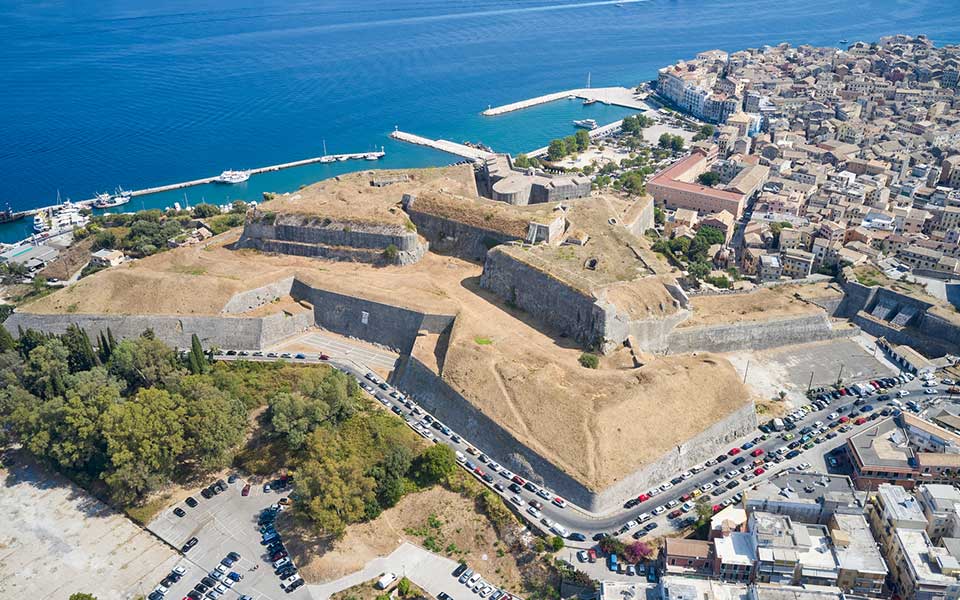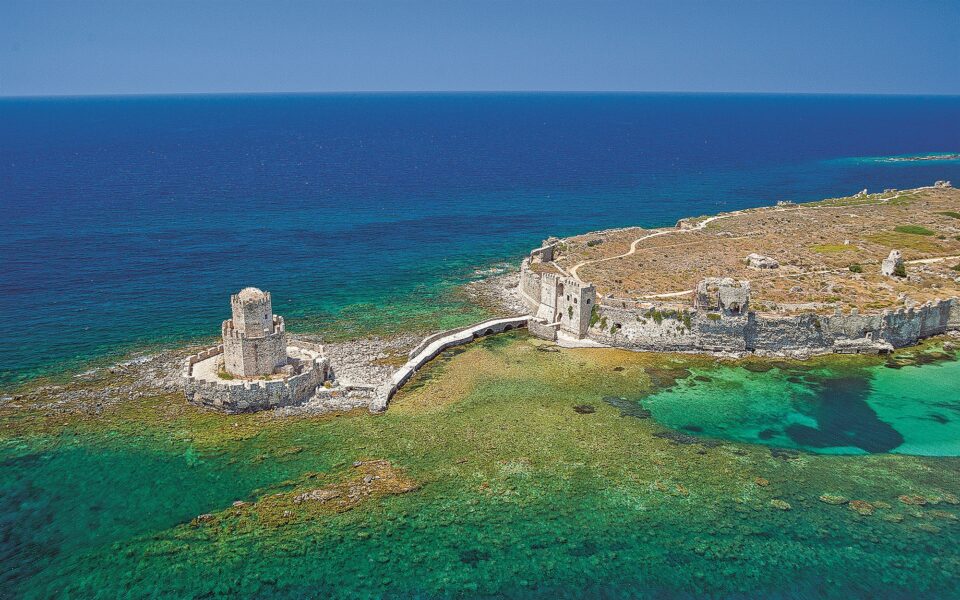The Greek National Tourism Organization’s (EOT) return to publishing was marked with a new coffee-table book on the castles of Greece. The last EOT publication, titled “Greece, a World Destination,” was made nine years ago, in 2014, to serve “the need to promote the country to tour operators, partners and dignitaries of the Organization,” the organization said in a recent press release.
In the same spirit of promoting the country internationally, the new bilingual edition titled “Touring the Castles of Greece” brings together some of the most beautiful fortifications across the country. Featuring work by 14 renowned photographers, the book serves its role as an album and as an ambassador, but in the end it indirectly but clearly raises a broader question of historical consciousness over the country’s monument stock, especially the ones dating from premodern times. The book was edited by historian Stefanos Kavallierakis, a Mediterranean and Oriental Studies professor at the University of Strasbourg.
“Life inside the castles expresses the life of Hellenism within the imperial context that dominated the Eastern Mediterranean, crossing the Roman, the Byzantine and the Frankish period, and ending up in the Ottoman Empire,” Kavallierakis says, explaining that he organized the material based on the importance of the castles, the need to promote them, their geographical distribution and the historical periods to which they belong.

© Hellenic Ministry of Culture and Sports
The publication was recently presented at the Cultural Center of Methoni, in southwestern Greece, where the regional governor of the Peloponnese, Panagiotis Nikas, referred to the restoration programs being carried out in cooperation with the Ministry of Culture. Methoni Castle, one of the most important in the country, is slated for restoration, as the study of the western wall, which has suffered the most damage, has been completed, according to the mayor of Pylos-Nestoros, Panagiotis Karvelas.
Recently, the Culture Ministry also announced plans to restore the castle of Zakynthos, for which 1.5 million euros have been earmarked, after it was included in the projects financed by the EU Recovery Fund.
“Life inside the castles was harsh, austere, full of hardships and corresponded to a model that changed with the establishment of the Greek state,” Kavallierakis says. Indeed, the castles reflect a reality that is connected to the wider fantasy for the various historical periods, and especially medieval times.
The publication contains excellent photographic material (the production was undertaken by Brainfood Publishing) and will hopefully be the beginning of a series of undertakings that will promote Greece internationally, serving the need for a more expanded identity of the country.
“Careful observers will notice the different eras reflected on the castles, the architectural and constructional development, the changes to the way of life over the centuries,” Kavallierakis says. “They are, in a way, the living, silent and solid witnesses of the past. Their testimony is timeless and always exciting.”
In the informal competition between European countries for the most beautiful and imposing castles, Greece has an opportunity and an obligation to showcase its treasures internationally.
This article was previously published at ekathimerini.com.












